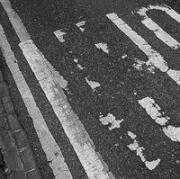For the cerebrally out there, this is an old, old, OLD story from 2010. BSM is now owned by the AA.
Well, I watched the segment which dealt with the BSM complaints – and I should also point out that the hits to the stories on this blog concerning BSM have gone into orbit!
It was a total non-event in the end. It was simply three complaints by three people about the service they’d received from BSM (with the distinct impression that certain details had been suppressed to keep the story as juicy as possible). Of course, those people had valid points on the surface of it all, but if BSM is teaching around 10,000 to 20,000 people at any single time (or 120,000 a year, as BSM claims) then three complaints is absolutely insignificant.
You can watch the segment by clicking the Watchdog image above, then by viewing the latest programme (11/11/2010, available for 7 days). The BSM bit starts at 27:53 into the show. [The video expired years ago.]
It begins by introducing BSM as the largest driving school in the country, nearly 100 years old, 120,000 pupils a year, higher-than-average pass rates, and so on. Then it does some contrived stuff about hill starts and parking. Finally, it starts on the complaints:
- one guy paid £1,700 for 70 hours of lessons and absolutely wanted and needed to pass.
So, you immediately think that this is going to be about people not being trained properly. However, at no point is his training questioned. It turns out that the car’s tax was out of date when he turned up at the test centre and the test couldn’t go ahead. Cue: a didactic lecture from the presenter about the law regarding road tax, and indignation (“shock and disbelief”) from the candidate for the camera about how you don’t expect this.
At the end of that complaint the presenter makes the comment about BSM “at least sending a car to the test centre on the day” (i.e. everything got sorted out). This led on to the next complaint, where the candidate apparently had to turn up at the test centre on their own.
- A young lad had a test booked (by his mum) and when he turned up there was no instructor or car.
The guy called his girlfriend, took the test in her car, and passed. BSM said that the instructor had texted to say he couldn’t make it and that another car would be there instead. The programme does not pursue this in any way whatsoever. Instead, it goes on about his mum, who apparently “had a hard time” getting her money back (she did get it back, albeit with an administration fee charged).
After a few wise words from his mum about BSM not caring and being arrogant, we are then informed that “many drivers don’t actually work for [BSM]” and that maybe this is why BSM “refuse to take responsibility”.
They suggest this may be why they have received other complaints – like the next one.
- A woman had had three instructors.
She argued that this was a problem because “he needed to understand her, and she needed to understand him” and that there were “breaks in her learning”. Her husband sits alongside nodding sagely as she talks about styles of learning.
This then leads on to the claim BSM made on its website that someone passes “every 6 seconds” with them – something they have already admitted was a mistake and is not correct. That doesn’t prevent Watchdog from calling in a fully qualified mathematician and whiteboard to prove that this claim is impossible (I say again: BSM had already acknowledged that fact). In any case, the mathematics the “expert” used was flawed on a number of fronts – not least because BSM might be the biggest single school, but it only represents about 6% (at best) of the total number of ADIs out there. Pushing that to one side though, even if BSM represented 100% of all ADIs then the claim was shown to be impossible (one more time: BSM had already admitted that this claim was in error).
At the end of the segment, it appeared that the first guy took his test – with BSM – and he passed. BSM said that they do dispute some of the details of the other claims made. I’ll bet they do. What with Watchdog geeing people up for the cameras.
BSM certainly isn’t perfect, but no one else is either. It is not uncommon for ADIs (whether they are independent or franchised) to screw up. The car breaks down, they have an accident, a family member is ill or dies, they wrote something incorrectly into their diary… it happens to anyone and everyone at some stage.
Car tax out of date? It was a mistake, and one I’m sure BSM doesn’t do deliberately – or regularly.
Having pupils turn up to test separately is unforgiveable – unless that’s what the pupil wanted, or if the pupil booked the test against the instructor’s wishes. I had one once who wanted to turn up at the test centre because he couldn’t afford the extra hour before his test! And more than once I have had pupils book tests against my advice, and then find themselves looking for another instructor. I wonder what they’d say if Watchdog got on to them?
Pupils having more than one instructor? Well, the woman in the Watchdog showobviously considered herself an expert in the training field and wasn’t ashamed to say so. It is common to find serial instructor-hopping pupils who fail to see that the problem is with them, not the ADI. Occasionally, a pupil just won’t gel with you and they’ll go elsewhere – they often can’t handle not being perfect and look to blame their instructor for their own weaknesses. You wouldn’t believe some of the tales you hear from them about “my last instructor”, but very few identify themselves as the issue. The woman in that clip would probably find herself looking for instructor #4 if she was one of mine. She’d have driven me mad. I reserve the right not to have to put up with complete arseholes, and if I get a pupil who repeatedly thinks they know better than me, and if I can’t stop them doing it (and believe me, I can be blunt), then they’ll find themselves looking for another instructor!
I think the “6 second” claim was pathetic. BSM admitted it was wrong before the show aired, and Watchdog gloated “but it took us to point it out”.
None of the complaints were absolutely specific to BSM. They could (and do) potentially happen to any ADI. Mistakes, mistaken claims, lying pupils, know-it-alls… all of them.
 I must confess that I already knew about this (or something very similar) from a while back.
I must confess that I already knew about this (or something very similar) from a while back. The story is suggesting that, along with potholes, missing or worn road markings are contributing directly to accidents and subsequent fatalities.
The story is suggesting that, along with potholes, missing or worn road markings are contributing directly to accidents and subsequent fatalities. At the end of the last episode of
At the end of the last episode of  The latest issue of Despatch was circulated a few days ago.
The latest issue of Despatch was circulated a few days ago.